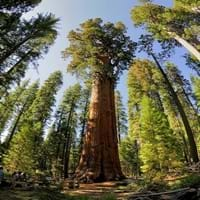Life Span
Perennial
Perennial
Type
Bulb or Corm or Tuber
Tree
Origin
South America
California
Types
Pamianthe cardenasii , Pamianthe parviflora , Pamianthe peruviana
Blue Iceberg, Cannibal, Muller
Habitat
All sorts of environments
Woodland Garden Canopy
USDA Hardiness Zone
8-10
6-9
Sunset Zone
21,22
1a, 1b, 2a, 2b, 3a, 3b, 4, 5, 6, 7, 8, 9, 10, 11, 14, 15, 16, 17, 18, 19, 20, 21, 22, 23, 24
Habit
Clump-Forming
Upright/Erect
Flower Color
White
Not Available
Flower Color Modifier
Bicolor
Bicolor
Leaf Color in Spring
Dark Green
Gray Green
Leaf Color in Summer
Light Green
Gray Green
Leaf Color in Fall
Several shades of Green
Gray Green
Leaf Color in Winter
Light Green
Gray Green
Leaf Shape
Strap shaped
Awl-Shaped
Plant Season
Spring, Summer, Fall
Spring, Summer, Fall, Winter
Sunlight
Partial Sun, Partial shade
Full Sun, Partial Sun
Type of Soil
Loam, Sand
Clay, Loam, Sand
The pH of Soil
Acidic, Neutral, Alkaline
Acidic, Neutral
Soil Drainage
Average
Well drained
Bloom Time
Spring, Late Spring, Early Summer, Summer, Late Summer
Not Available
Tolerances
Drought
Drought
Where to Plant?
Ground, Pot
Ground
How to Plant?
Offsets
Cuttings, Seedlings
Plant Maintenance
Medium
Medium
Watering Requirements
Keep the ground moist but not water-logged
Requires large amount of water
In Summer
Lots of watering
Lots of watering
In Spring
Moderate
Moderate
In Winter
Average Water
Average Water
Soil pH
Acidic, Neutral, Alkaline
Acidic, Neutral
Soil Type
Loam, Sand
Clay, Loam, Sand
Soil Drainage Capacity
Average
Well drained
Sun Exposure
Partial Sun, Partial shade
Full Sun, Partial Sun
Pruning
Pinch or prune as they grow to promote branching and bushiness, Remove damaged leaves, Remove dead branches, Remove dead leaves, Requires little pruning
prune to control shape
Fertilizers
All-Purpose Liquid Fertilizer, High phosphorus
Apply 10-10-10 amount
Pests and Diseases
Leaf spot, Mosaic viruses
Grey mold, Root rot
Plant Tolerance
Drought
Drought
Flower Petal Number
Single
Not Available
Fragrant Bark/Stem
No
Yes
Foliage Texture
Coarse
Fine
Foliage Sheen
Glossy
Glossy
Attracts
Bees, Birds, Bumblebees, Butterflies, Hummingbirds, pollinators
Chickarees, Sapsuckers, White-headed woodpeckers
Allergy
Unknown
Eye irritation, Skin irritation
Aesthetic Uses
Beautification, Bouquets, Ornamental use, Showy Purposes
Bonsai, Showy Purposes
Beauty Benefits
No Beauty Benefits
Not Available
Environmental Uses
Air purification
Air purification
Medicinal Uses
No Medicinal Use
No Medicinal Use
Part of Plant Used
Not Available
Wood
Other Uses
Beneficial species for attracting pollinators, Decoration Purposes
Used for making fence posts, Used to make wood shingles
Used As Indoor Plant
No
Yes
Used As Outdoor Plant
Yes
Yes
Garden Design
Bog Garden, Container, Feature Plant, Foundation, Mixed Border, Water Gardens
Shade Trees, Street Trees
Botanical Name
HYMENOCALLIS longipetala
SEQUOIADENDRON giganteum
Common Name
Peruvian Daffodil, Spiderlily
Giant Sequoia
In Hindi
peruvian daffodil
Giant Sequoia
In German
peruvian daffodil
Giant Sequoia
In French
peruvian daffodil
Séquoia géant
In Spanish
Pamianthe
Secoya gigante
In Greek
peruvian daffodil
Giant Sequoia
In Portuguese
peruvian daffodil
Sequoia gigante
In Polish
peruvian daffodil
Giant Sequoia
In Latin
peruvian daffodil
Giant Sequoia
Phylum
Magnoliophyta
Tracheophyta
Class
Liliopsida
Pinopsida
Order
Asparagales
Pinales
Family
Amaryllidaceae
Cupressaceae
Genus
Pamianthe
Sequoiadendron
Clade
Angiosperms, Monocots
Not Available
Tribe
Clinantheae
Senecioneae
Subfamily
Amaryllidoideae
Sequoioideae
Number of Species
Not Available
Not Available
Season and Care of Peruvian Daffodil and Giant Sequoia
Season and care of Peruvian Daffodil and Giant Sequoia is important to know. While considering everything about Peruvian Daffodil and Giant Sequoia Care, growing season is an essential factor. Peruvian Daffodil season is Spring, Summer and Fall and Giant Sequoia season is Spring, Summer and Fall. The type of soil for Peruvian Daffodil is Loam, Sand and for Giant Sequoia is Clay, Loam, Sand while the PH of soil for Peruvian Daffodil is Acidic, Neutral, Alkaline and for Giant Sequoia is Acidic, Neutral.
Peruvian Daffodil and Giant Sequoia Physical Information
Peruvian Daffodil and Giant Sequoia physical information is very important for comparison. Peruvian Daffodil height is 61.00 cm and width 61.00 cm whereas Giant Sequoia height is 2,440.00 cm and width 670.00 cm. The color specification of Peruvian Daffodil and Giant Sequoia are as follows:
Peruvian Daffodil flower color: White
Peruvian Daffodil leaf color: Dark Green
Giant Sequoia flower color: Not Available
- Giant Sequoia leaf color: Gray Green
Care of Peruvian Daffodil and Giant Sequoia
Care of Peruvian Daffodil and Giant Sequoia include pruning, fertilizers, watering etc. Peruvian Daffodil pruning is done Pinch or prune as they grow to promote branching and bushiness, Remove damaged leaves, Remove dead branches, Remove dead leaves and Requires little pruning and Giant Sequoia pruning is done prune to control shape. In summer Peruvian Daffodil needs Lots of watering and in winter, it needs Average Water. Whereas, in summer Giant Sequoia needs Lots of watering and in winter, it needs Average Water.





